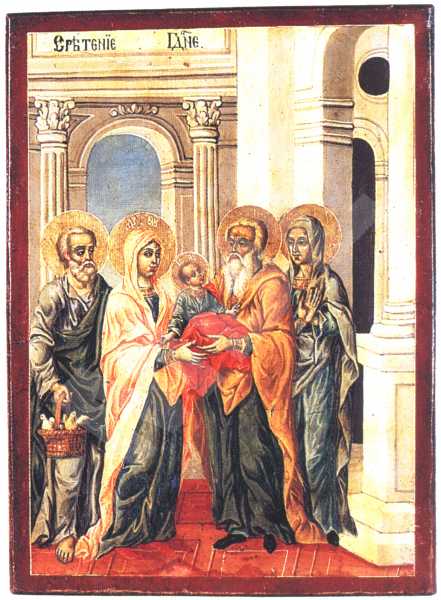Candlemas (The Presentation of Christ in the Temple)
Type:
Icon
Period:
The beginning of the
19 century
Toma Vishanov-Molera, born around 1750, painter of icons and murals, founder of the Bansko school of art. He grew up in the family of the clergyman Vishan. Around 1765 he went to Vienna, where he studied painting. It is not known who were his teachers there or when he returned to Bansko. His fellow villagers called him the Moler, Molera(from German Maler ‘painter’), whence the entire family's surname. Under the influence of the European 18th century art Toma Vishanov painted his works in a new manner, unknown until then in Orthodox art. The figures are realistic, vivid, expressive. Toma Vishanov is an innovator in the early period of Bulgarian Renaissance. His ideas on art were not understood and at first were rejected by his contemporaries. His work has not been studied extensively. He died after 1811 in Bansko.
Dimmensions (cm):
47
/ 36
/ 2.5
Location
Country: Bulgaria
Province: Blagoevgrad
Village: Dobursko
Church: The Meeting of the Lord
Source
Country: Bulgaria
Province: Blagoevgrad
Village: Dobursko
Church: The Meeting of the Lord
Description
A traditional composition treating this theme. Painted in the center of the pictorial field is the figure of the righteous Simeon who is taking the infant Christ from the hands of the Holy Mother of God. Behind her is the righteous Joseph, holding in his right hand a little basket with two turtle-doves - an ancient Jewish custom of bestowing birds on the temple by the parents at the presentation of the infants at the Altar of Heaven. Behind Simeon is the figure of Saint Anne with her arms crossed in prayer. The scene is set against the background of the temple's interior, reproduced with a rich Baroque decoration.
Iconographical technique: Egg distemper
In the typical of the 19th century style, with a smooth texture of the painting layer. The carnations are painted by means of evenly applied basic tones in ochre-and-brown. The transitions are finely shaded. The vestments of the figures are modelled with an evenly and densely applied tone, and the line-work is with liquid gold. The varnish cover is laid thinly and evenly. The gilding on the aureoles is with gold-leaf.
Base material: Wood
The icon's base is a one-piece softwood panel, reinforced additionally with two inserted beams. The ground coat is of plaster, about 0,6 mm thick, laid in a thin layer.
State, restoration traces and comments
There are no traces of any previous restorative intervention.


